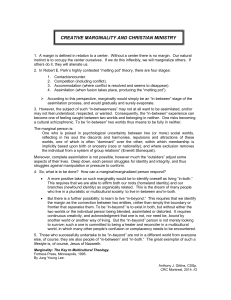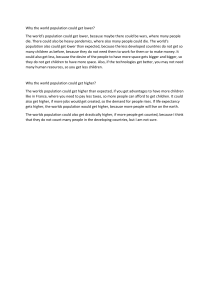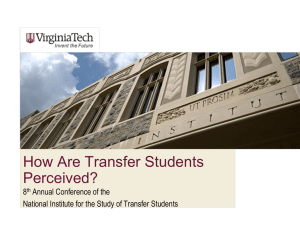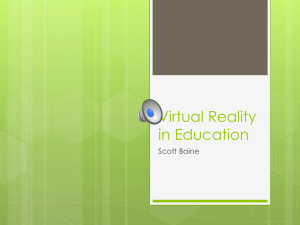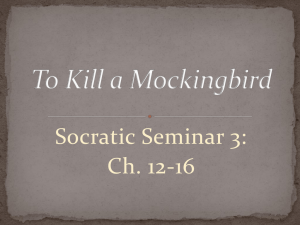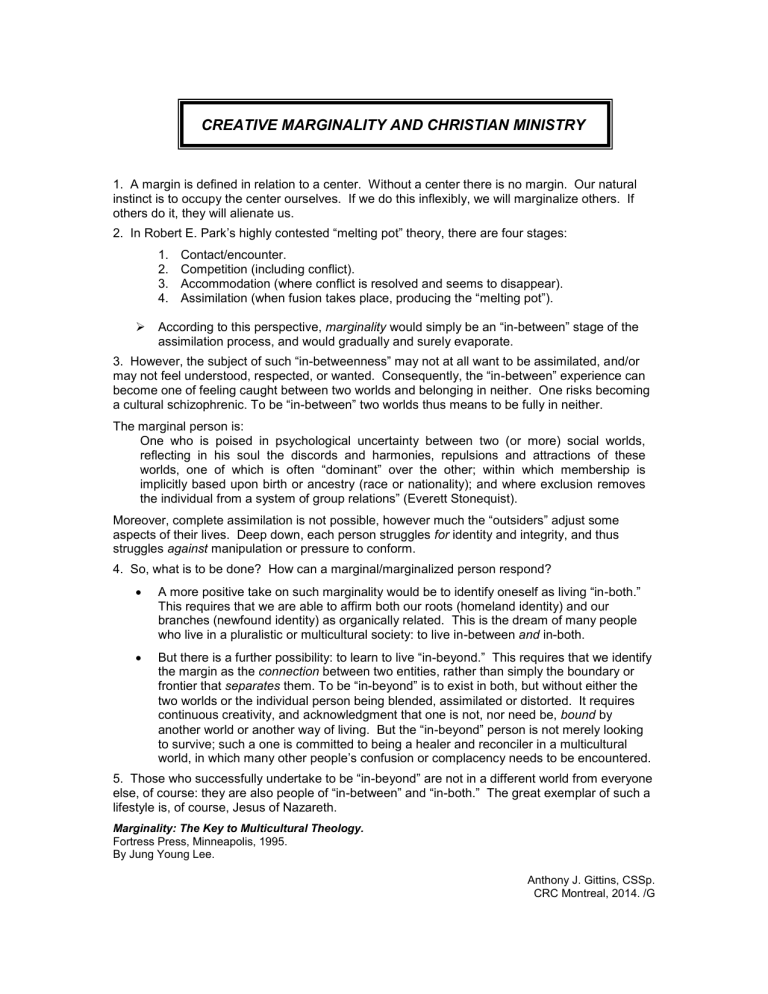
CREATIVE MARGINALITY AND CHRISTIAN MINISTRY 1. A margin is defined in relation to a center. Without a center there is no margin. Our natural instinct is to occupy the center ourselves. If we do this inflexibly, we will marginalize others. If others do it, they will alienate us. 2. In Robert E. Park’s highly contested “melting pot” theory, there are four stages: 1. 2. 3. 4. Contact/encounter. Competition (including conflict). Accommodation (where conflict is resolved and seems to disappear). Assimilation (when fusion takes place, producing the “melting pot”). According to this perspective, marginality would simply be an “in-between” stage of the assimilation process, and would gradually and surely evaporate. 3. However, the subject of such “in-betweenness” may not at all want to be assimilated, and/or may not feel understood, respected, or wanted. Consequently, the “in-between” experience can become one of feeling caught between two worlds and belonging in neither. One risks becoming a cultural schizophrenic. To be “in-between” two worlds thus means to be fully in neither. The marginal person is: One who is poised in psychological uncertainty between two (or more) social worlds, reflecting in his soul the discords and harmonies, repulsions and attractions of these worlds, one of which is often “dominant” over the other; within which membership is implicitly based upon birth or ancestry (race or nationality); and where exclusion removes the individual from a system of group relations” (Everett Stonequist). Moreover, complete assimilation is not possible, however much the “outsiders” adjust some aspects of their lives. Deep down, each person struggles for identity and integrity, and thus struggles against manipulation or pressure to conform. 4. So, what is to be done? How can a marginal/marginalized person respond? A more positive take on such marginality would be to identify oneself as living “in-both.” This requires that we are able to affirm both our roots (homeland identity) and our branches (newfound identity) as organically related. This is the dream of many people who live in a pluralistic or multicultural society: to live in-between and in-both. But there is a further possibility: to learn to live “in-beyond.” This requires that we identify the margin as the connection between two entities, rather than simply the boundary or frontier that separates them. To be “in-beyond” is to exist in both, but without either the two worlds or the individual person being blended, assimilated or distorted. It requires continuous creativity, and acknowledgment that one is not, nor need be, bound by another world or another way of living. But the “in-beyond” person is not merely looking to survive; such a one is committed to being a healer and reconciler in a multicultural world, in which many other people’s confusion or complacency needs to be encountered. 5. Those who successfully undertake to be “in-beyond” are not in a different world from everyone else, of course: they are also people of “in-between” and “in-both.” The great exemplar of such a lifestyle is, of course, Jesus of Nazareth. Marginality: The Key to Multicultural Theology. Fortress Press, Minneapolis, 1995. By Jung Young Lee. Anthony J. Gittins, CSSp. CRC Montreal, 2014. /G
